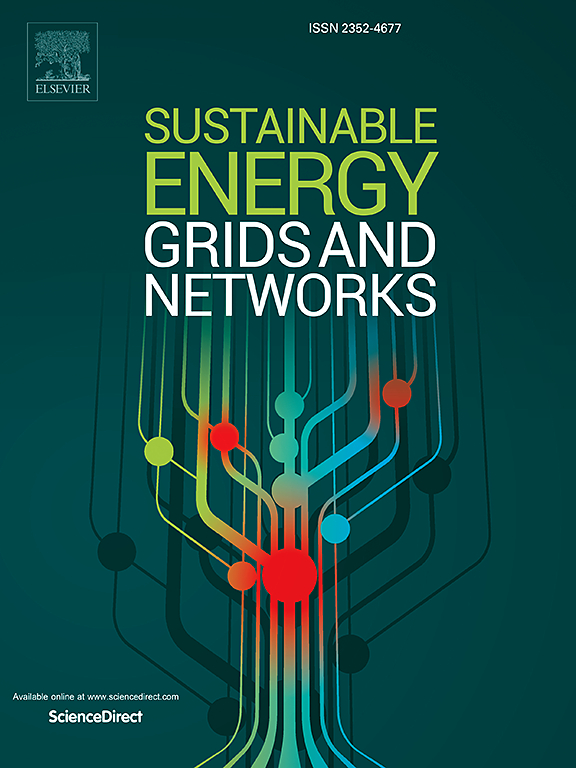在电网拥堵中增加可再生能源的电缆池:在成本不确定的情况下,探索太阳能和电池与现有陆上风能的最佳整合
IF 5.6
2区 工程技术
Q2 ENERGY & FUELS
引用次数: 0
摘要
风能和太阳能光伏发电(PV)装置的迅速扩张造成的电网拥堵阻碍了可再生能源的进一步整合。本研究探讨了电缆池,一种多种能源资产共享单一电网连接的机制,作为一种潜在的解决方案。对现有10 兆瓦风电场和10 兆瓦电网连接的太阳能光伏和电池集成进行了案例研究。优化设计和调度以实现最大利润,同时探索成本不确定性和未来太阳能光伏和电池成本降低的影响。研究结果表明,电缆池可以显著增加单个电网连接的可再生电力输出。单独的太阳能光伏的集成导致19兆瓦的最佳容量,与9 %的生产削减。集成一个43兆瓦时,7 兆瓦的电池(持续时间6小时)有助于存储否则减少的能量,将最佳太阳能光伏部署增加到28兆瓦,并将削减减少到7 %。电池将项目从依赖天气转变为半可调度,可以在风能和/或太阳能产量高的时候充电,在每小时电价高的时候放电。预计太阳能光伏和电池成本的降低进一步加强了经济原理,促进了这些技术的更多部署。本文章由计算机程序翻译,如有差异,请以英文原文为准。
Cable pooling to add renewables amid grid congestion: Exploring optimal integration of solar and batteries with existing onshore wind under cost uncertainty
Grid congestion caused by the swift expansion of wind and solar photovoltaics (PV) installations obstructs additional renewable integration. This study investigates cable pooling, a mechanism where multiple energy assets share a single grid connection, as a potential solution. A case study was conducted to model the integration of solar PV and batteries with an existing 10 MW wind farm and 10 MW grid connection. The design and dispatch were optimized for maximal profit, while exploring the implications of cost uncertainty and future cost reductions for solar PV and batteries. The findings indicate that cable pooling can significantly increase renewable electricity output from a single grid connection. The integration of solely solar PV results in an optimal capacity of 19 MWp, with 9 % of production curtailed. Integrating a 43 MWh, 7 MW battery (with a 6-hour duration) facilitates the storage of otherwise curtailed energy, increases the optimal solar PV deployment to 28 MWp, and reduces curtailment to 7 %. Batteries convert the project from weather-dependent to semi-dispatchable, enabling charging during high wind and/or solar production and discharging when hourly electricity prices are high. Anticipated cost reductions for solar PV and batteries further strengthen the economic rationale, facilitating increased deployment of these technologies.
求助全文
通过发布文献求助,成功后即可免费获取论文全文。
去求助
来源期刊

Sustainable Energy Grids & Networks
Energy-Energy Engineering and Power Technology
CiteScore
7.90
自引率
13.00%
发文量
206
审稿时长
49 days
期刊介绍:
Sustainable Energy, Grids and Networks (SEGAN)is an international peer-reviewed publication for theoretical and applied research dealing with energy, information grids and power networks, including smart grids from super to micro grid scales. SEGAN welcomes papers describing fundamental advances in mathematical, statistical or computational methods with application to power and energy systems, as well as papers on applications, computation and modeling in the areas of electrical and energy systems with coupled information and communication technologies.
 求助内容:
求助内容: 应助结果提醒方式:
应助结果提醒方式:


